Dead reckoning: Canada's national cemetery is bringing truth about residential schools to light
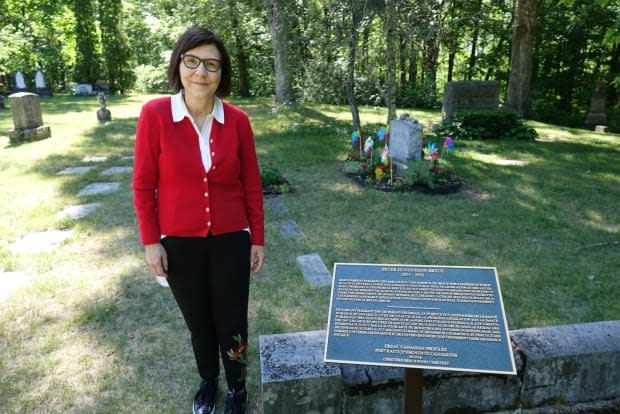

In June 2008, the day before then prime minister Stephen Harper stood in the House of Commons to deliver an apology to survivors of Canada's residential school system, Cindy Blackstock knelt beside a simple gravestone in a peaceful corner of Ottawa's Beechwood Cemetery.
There lay Dr. Peter Henderson Bryce, who, in a 1907 report to his bosses at the Department of Indian Affairs, warned of atrocious health conditions at residential schools in Western Canada, where the mortality rate among the Indigenous children was shockingly high, largely due to tuberculosis.
What's more, Bryce suspected the church-run schools were failing to disclose the true extent of the tragedy.
Indian Affairs ignored his warnings, and in 1921, Bryce was forced into retirement. But he didn't sit idle. The following year, Bryce published a version of the report himself, with the unmistakably censorious title The Story of a National Crime. He died a decade later.
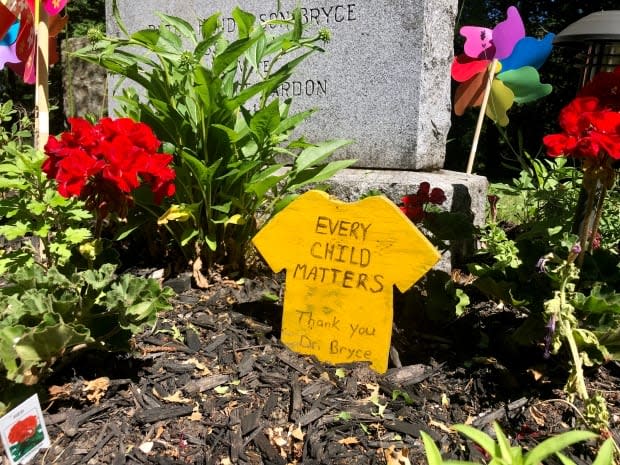
Blackstock, a McGill University professor and executive director of the First Nations Child and Family Caring Society, said she visited Bryce's grave back in 2008 to "thank him for everything that he tried to do."
Bryce put a "a red-hot poker stick into the mythology that people back then didn't know any better, or even if they did, they didn't care," said Blackstock. "He knew and he cared, and let Canada know as well."
She was determined that every visitor to Beechwood, Canada's national cemetery and a national historic site, should know about Bryce, and was instrumental in getting him his own plaque near his grave site.
Bryce's granddaughter, then 93, attended the unveiling ceremony in August 2015, where she remembered her grandfather as a man who loved children and always lamented that his warnings had fallen on deaf ears.
Bryce's plaque is one of several that Beechwood Cemetery has either added or amended in recent years in an effort to acknowledge the role some of the people buried there played in Canada's residential school system.

Bryce's "was plaque number one," said Blackstock. "The real challenge came with plaque number two, which was Duncan Campbell Scott."
'That plaque needs a revision'
Scott's grave site, which is not far from Bryce's, already had a plaque. The problem, according to Blackstock, was the story it told — or, more to the point, the story it didn't tell.
"It was glowing about this guy: Confederation poet, all these other types of things, and [the plaque] faces right onto the parking lot. And I thought to myself, that plaque needs a revision."
Yes, Scott was an acclaimed poet and writer, but as a high-ranking bureaucrat within the Department of Indian Affairs in the early 20th century, he also vowed to "get rid of the Indian problem" and made residential school attendance compulsory for children between the ages of seven and 15.
It was Scott who ultimately stifled Bryce's report and ignored his pleas to improve conditions at the schools.
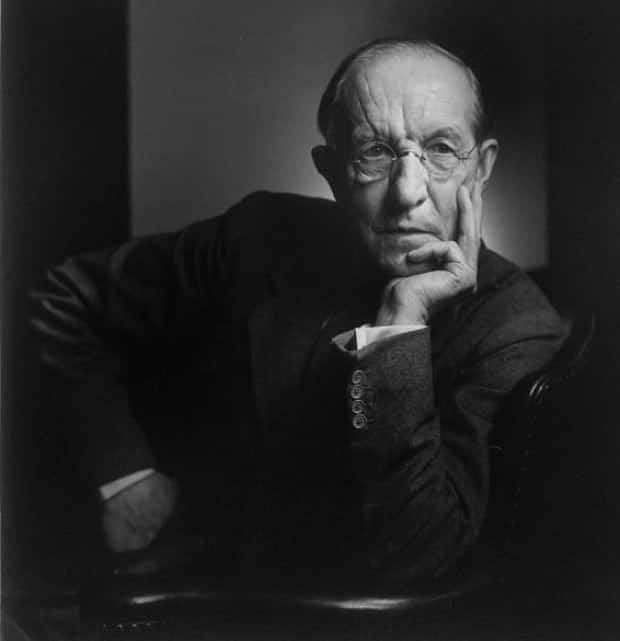
Yet the plaque near Scott's grave mentioned none of this.
"What my worry was is that residential school survivors would go to see Bryce and would walk by that one en route," Blackstock said.
She called the cemetery's then president, Roger Boult, ready for a fight, but was surprised by his response.
"He says, 'How do we make this right?'" Blackstock recalled. "That was a great teaching for me, too, right? We're so programmed to have to struggle to get the proper telling of history, and yet here was a man who was convinced by the documents and just wanted to do the right thing."
Scott's plaque was removed that day, and was soon replaced by a new one that mentions his rightful place among Canada's renowned poets, but also notes the findings of the Truth and Reconciliation Commission. In 2015, the TRC concluded that the policies Scott helped craft and enforce amounted to cultural genocide.

"We made sure that [the plaque] was done in a dignified and respectful way, but we wanted to make sure that ... as Duncan Campbell Scott said in one of his poems, 'The shadow's afoot with the shine,' and that there has to be a proper telling of history here," Blackstock said.
"There has to be an acknowledgement that not all legacies are equal. So his poetic contributions, while important, are eclipsed by the role he had in the residential schools."
Providing the 'missing' element
After that, Beechwood began to look for others buried on its grounds whose stories needed retelling through a 21st-century lens.
There was Nicholas Flood Davin, a lawyer, newspaper editor, politician, prominent advocate for women's suffrage — and in 1879, author of the Report on Industrial Schools for Indians and Half-Breeds, which urged the federal government to establish the residential school system.
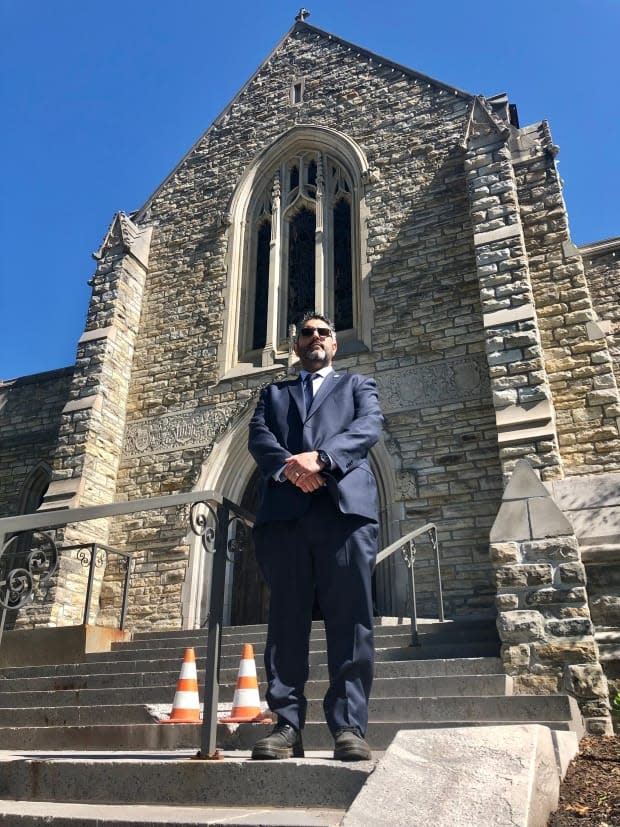
In a nearby mausoleum lies William MacDougall, a Father of Confederation who, after being appointed lieutenant-governor of Rupert's Land and the North-Western Territory in 1869, was repelled by Louis Riel's rebels when he tried to reach Fort Garry.
According to dispatches, MacDougall requested the assistance of 1,000 British troops to crush the Métis uprising.
Along with Bryce's and Scott's plaques, Davin's and MacDougall's form the core of what Beechwood Cemetery calls its Reconciling History Tour.
"We believe in reconciliation, and we believe in the dialogue that we can have," said Nick McCarthy, the cemetery's director of marketing, communications and community outreach. "It's not about rewriting history, it's not about changing the history. It's about providing the element that has been missing."
'You want to speak the truth'
Since the tour's launch in 2014, hundreds of school groups and other guests have taken it. Last Sunday, it was opened to the general public.
The free tour presents these individuals as the complex characters they were, but it doesn't pull any punches. McCarthy believes a cemetery is the perfect setting for this kind of reckoning.
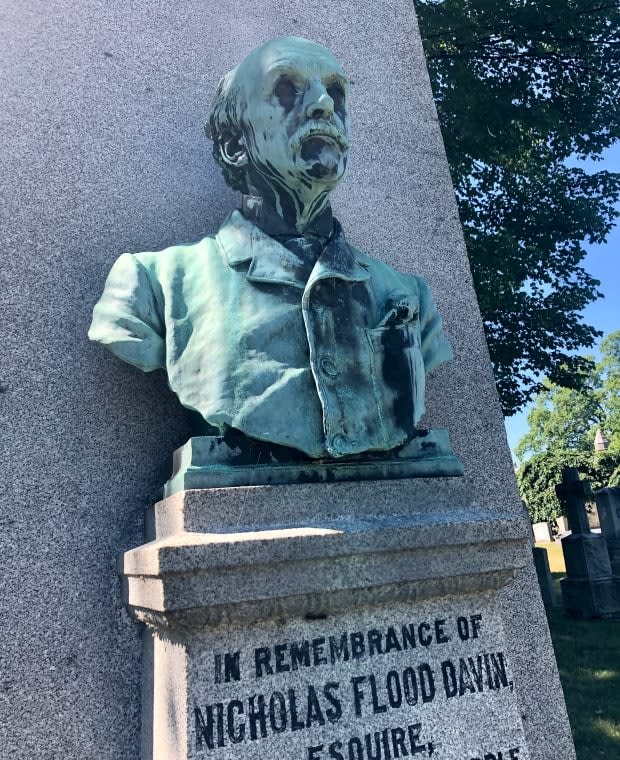
"It's a sacred space, right? So it's a place where you're meant to … be reserved, you're meant to have dialogue, you're meant to have discussion, you're meant to actually speak in an open way and in a very reconciliatory way," said McCarthy. "So when you're speaking of the dead, you don't necessarily want to speak ill, but you want to speak truth."
A more contemporary addition to the tour was Olive Patricia Dickason, whom McCarthy regards as "the mother of Indigenous studies" in Canada, and whose groundbreaking work is still helping pave the way toward reconciliation.
McCarthy said the cemetery is looking for others whose stories — noble, shameful or somewhere in between — need to be told truthfully.
"It's time to actually share that history and acknowledge that we've done wrong, acknowledge that we need to move things forward, acknowledge that reconciliation is an act ... but being silent is also an action against reconciliation," McCarthy said.

Blackstock believes other cities and cemeteries across Canada can take a page from Beechwood's book.
"In many cases, I think we can use these as teaching tools," she said. "If we have the courage to learn as a society, and if the government would finally trust us with the truth, I think that we can really learn from the past in really constructive ways."

 Yahoo Finance
Yahoo Finance 